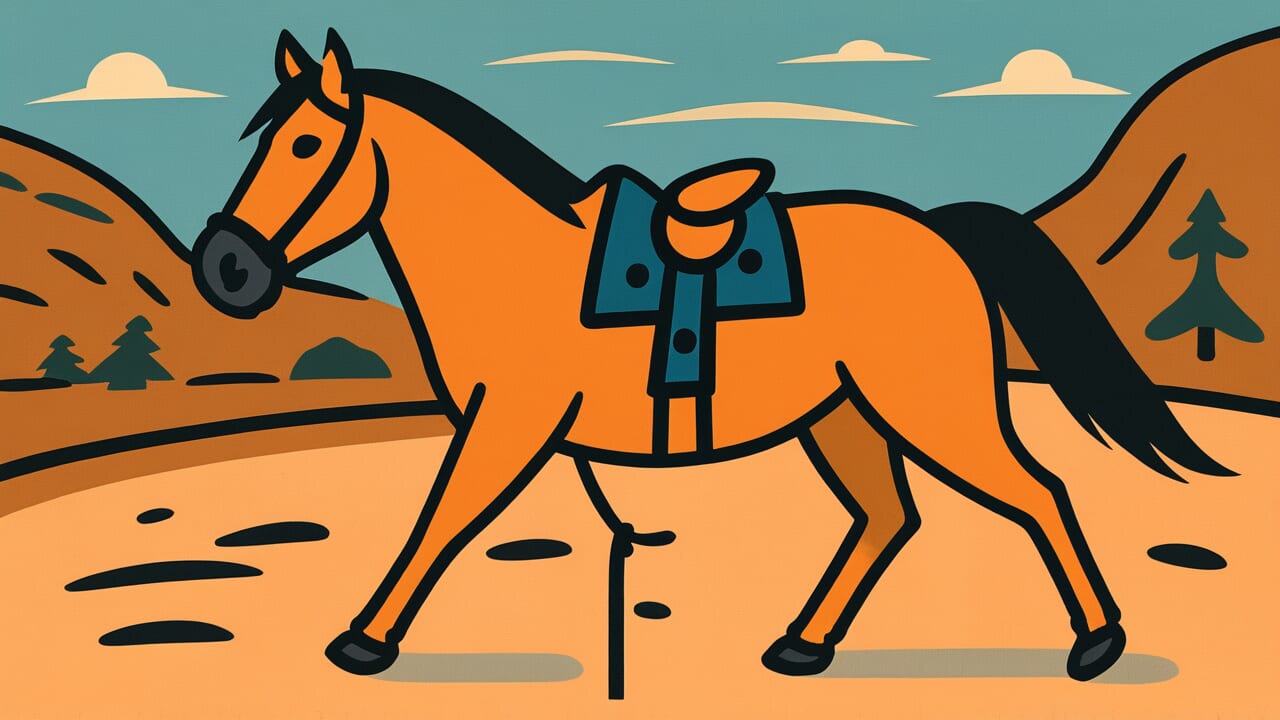How to Read “Bridle a wild horse from the front”
Arauma no kutsuwa wa mae kara
Meaning of “Bridle a wild horse from the front”
This proverb teaches that you should face dangerous things and difficult problems head-on with courage.
Imagine trying to bridle a wild-tempered horse. If you approach from behind or the side, the horse becomes wary of your movements and grows more dangerous.
But if you face it from the front, the horse clearly recognizes your presence and actually calms down.
This applies to life’s difficulties too. Looking away from problems or taking detours can make things worse.
Facing them directly and dealing with them sincerely leads to safer and more reliable solutions.
Today, people use this saying when facing situations they want to avoid. Troublesome work, difficult negotiations, or relationship conflicts all call for this wisdom.
It’s a phrase that encourages the courage and resolve to tackle problems head-on instead of running away.
Origin and Etymology
The exact first appearance of this proverb in literature is unclear. It likely originated in Japan’s farming villages and samurai society, where horse-handling culture was deeply rooted.
A bridle is the metal piece placed in a horse’s mouth. Combined with reins, it’s an essential tool for controlling horses.
Bridling a wild horse was one of the most dangerous tasks for anyone working with horses.
The interesting part is “from the front.” When approaching a wild horse from behind or the side, the horse startles and the danger of being kicked increases.
But approaching boldly from the front lets the horse fully recognize the human’s presence. This actually tends to calm the horse down.
This reflects the deep understanding our ancestors had of horse behavior.
This practical horse-handling method eventually evolved into life wisdom. It teaches that you shouldn’t run from or detour around dangerous things or difficult problems.
Instead, you should face them directly. Using a familiar animal like the horse to convey the importance of courage and resolve is a distinctly Japanese way of teaching.
Usage Examples
- There’s no point fearing the risk of failure in a new business. As they say, bridle a wild horse from the front, so let’s tackle it head-on.
- In handling complaints, follow the spirit of bridle a wild horse from the front. First, face the customer directly.
Universal Wisdom
Humans instinctively try to avoid danger. But our ancestors saw a deep truth: running from danger doesn’t always lead to safety.
This proverb has been passed down for generations precisely because it conveys this paradoxical wisdom.
Approach a wild horse from behind and you’ll be kicked. Approach from the side and it will thrash about.
But face it boldly from the front, and the horse recognizes you and actually calms down.
This represents a fundamental truth about life. With dangerous things, the very act of trying to avoid them creates new dangers.
When people face difficulties, they tend to take detours or procrastinate. But during that time, problems grow larger and fear swells in their hearts.
Conversely, the moment you decide to face something head-on, your mind mysteriously settles. The path to resolution becomes visible.
This proverb shows that courage isn’t the absence of fear. It’s the resolve to face things directly even when you’re afraid.
Through the familiar presence of horses, our ancestors taught one of life’s most important attitudes.
Only those who face difficulties instead of fleeing can gain true safety and growth. This universal truth lives here.
When AI Hears This
When stopping a running wild horse, why must it be from the front? This is a problem of “controllability” in control engineering.
To control an object’s motion, the angle at which you apply force relative to its direction of movement is critically important.
Imagine a wild horse running at 30 kilometers per hour. Pulling the bridle from the side won’t reduce its speed because the force vector is perpendicular to the direction of motion.
You only add rotational motion, making it more uncontrollable. Pulling from behind is worst of all—you’re helping the horse accelerate.
What happens when you pull from the front? Force works in the exact opposite direction of the kinetic energy, maximizing the speed reduction effect.
More importantly, the horse’s head—the “input point”—is located forward of the horse’s center of gravity.
In control engineering, the positional relationship between a system’s input and output points determines control performance.
Pulling the front bridle directly controls the horse’s center of gravity shift while also restricting its field of vision.
One operation achieves both speed control and directional control.
Modern cars follow the same principle. Turning the steering wheel during emergency braking causes loss of control.
First reduce kinetic energy, then change direction. This sequence is the iron rule of control.
Ancient people understood this without theory.
Lessons for Today
Modern society makes it easy to postpone problems. We leave emails unread, avoid difficult conversations, and delay career choices.
But this proverb teaches that such attitudes are what truly make us suffer.
Is there a problem you’re avoiding right now? It might be a meeting with your boss or an important family discussion.
Or perhaps it’s facing your own weaknesses or failures.
Bridle a wild horse from the front encourages us. If you have the courage to face things head-on instead of running, the path surprisingly opens up.
The moment of confronting a problem is certainly scary. But when you take that step, you’ll discover new strength within yourself.
What matters isn’t handling things perfectly. The very attitude of trying to face things head-on is already the first step toward resolution.
Take the wisdom our ancestors taught through horses and turn it into your courage today.



Comments